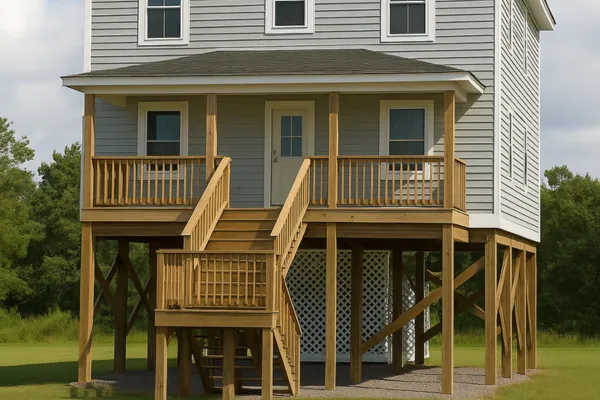Newsletters

Elevation Doesn’t Mean Protection
Elevation Doesn’t Mean Protection: What Every Property Owner Needs to Know
When it comes to flood insurance, there’s a dangerous myth floating around:
“My building is elevated, so I’m safe.”
I hear it all the time — from commercial property owners, association board members, and even insurance agents. But here's the truth:
👉 Elevation doesn’t automatically mean full coverage.
👉 And it definitely doesn’t mean you're claim-proof.
Let’s Break It Down: The Base Flood Elevation (BFE)
The Base Flood Elevation (BFE) is the level that FEMA has determined floodwaters are likely to reach during a major flood event. If any part of your property is below that line — even in an elevated building — you could be in trouble.
FEMA and the National Flood Insurance Program (NFIP) have strict coverage rules when it comes to spaces below the BFE. That includes:
Basements
Enclosures
Garage levels
Mechanical rooms
Storage areas
These spaces often have limited or no coverage under the NFIP. That means any HVAC units, electrical panels, appliances, or contents located in these areas may not be covered — even if your building looks like it’s “elevated” from the outside.
Real Example: What’s Actually at Risk?
After a flood, I’ve seen owners blindsided when they find out their insurance won’t pay for:
Finished basements
Elevators or lift systems
Water heaters and AC units
Stored equipment or inventory
Electrical and mechanical systems
The worst part? These aren't rare losses — they're some of the most expensive items to replace after a flood.
Why It Matters for Your Claim
FEMA’s NFIP policies are building-specific and elevation-dependent. That means you could do everything right with your mitigation — pumps, sandbags, even flood vents — but if your mechanicals are in the wrong spot, your claim might still get denied.
How to Protect Yourself
Flood preparedness isn’t just about stopping water — it’s about understanding your risk on paper and on-site.
Here’s how I help clients protect their properties before the water rises:
✅ Walkthrough of your property to identify elevation risks
✅ Review of your flood insurance policy and elevation certificate
✅ Customized action plan to reduce exposure and improve claim outcomes
Final Thought: Don’t Assume You’re Safe. Know It.
Elevation is a great start — but it’s not a guarantee.
Let’s get your property, policy, and elevation status reviewed before the next flood hits.
📩 Ready to protect what you’ve built? Contact me here for a pre-flood consultation.

